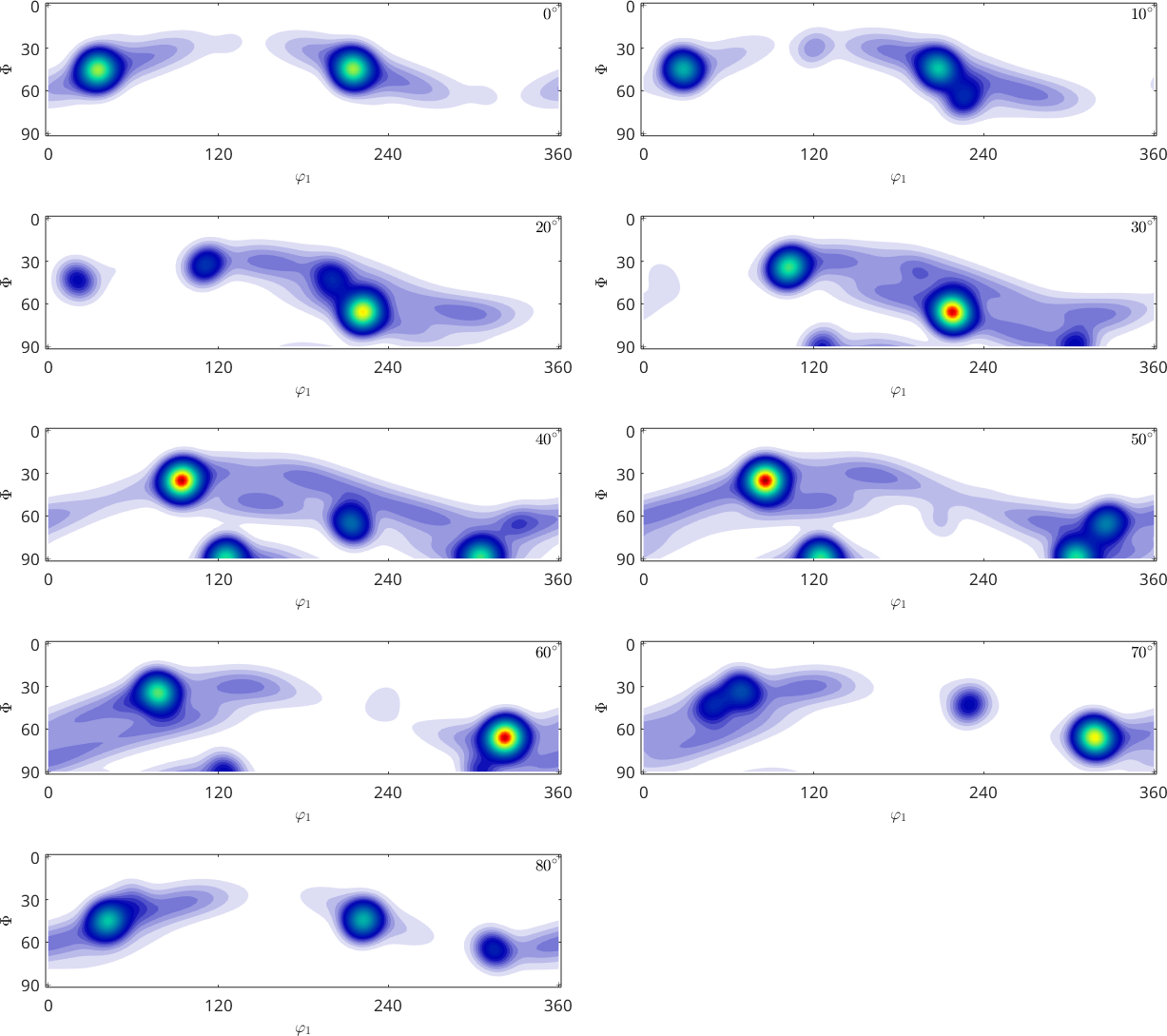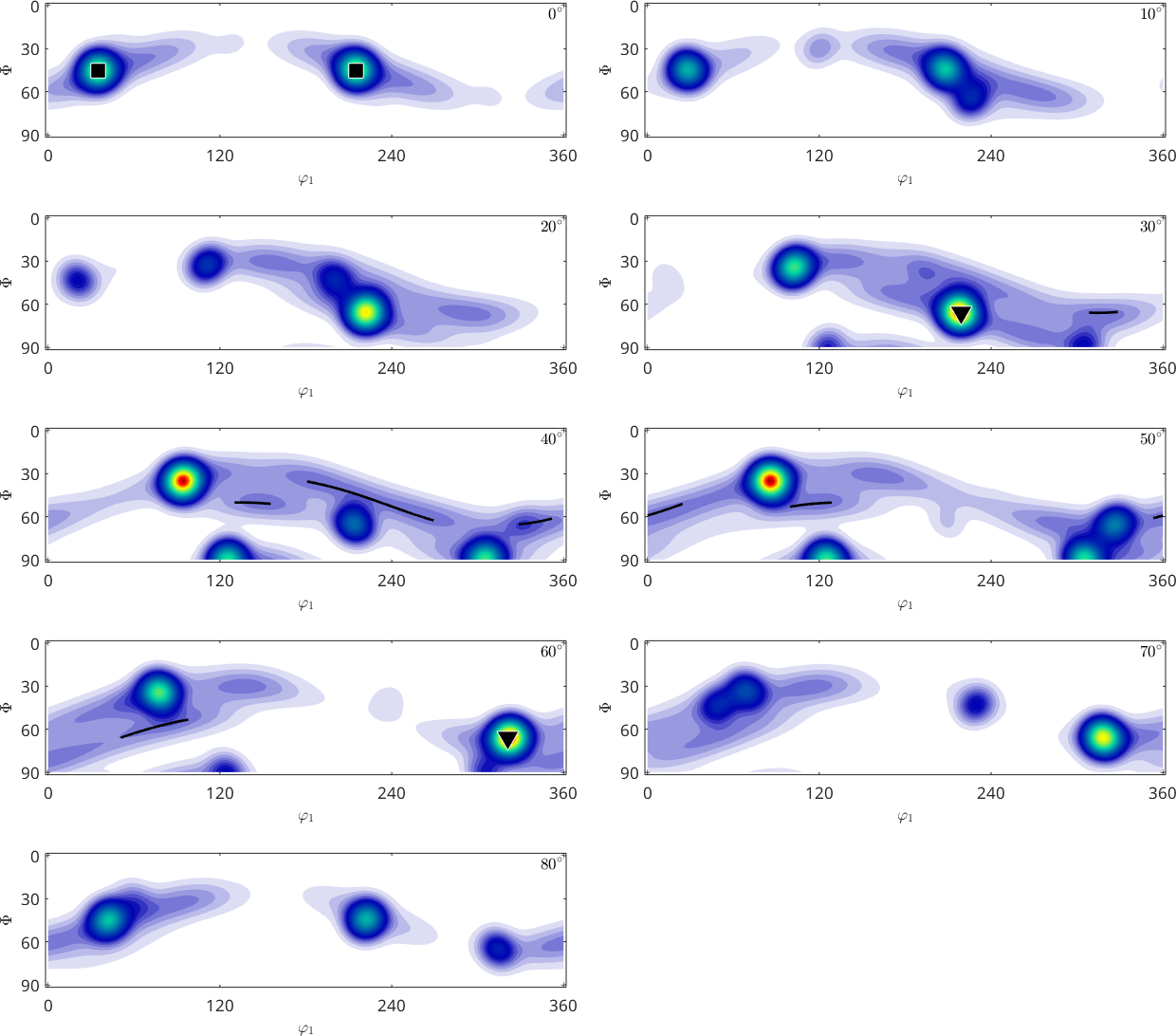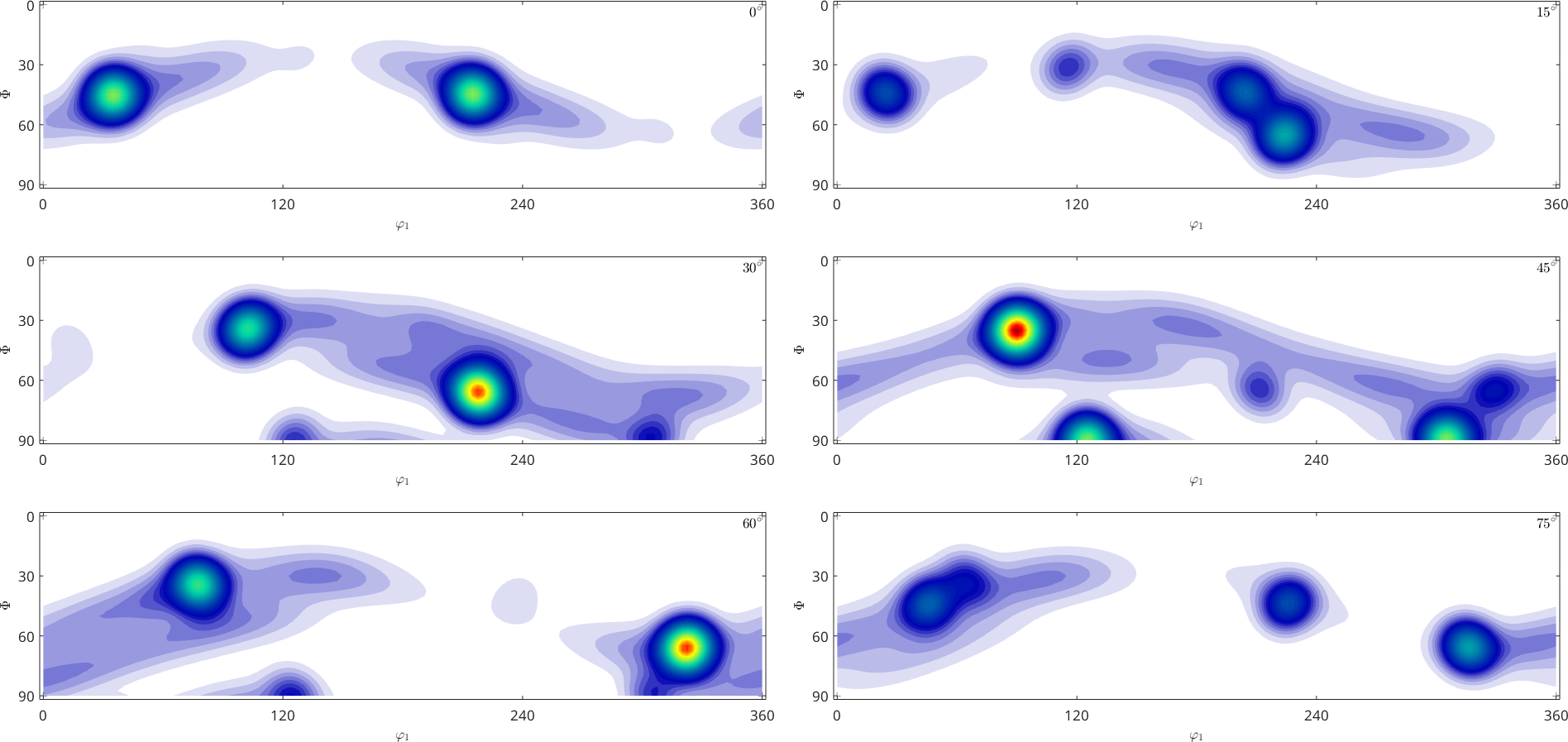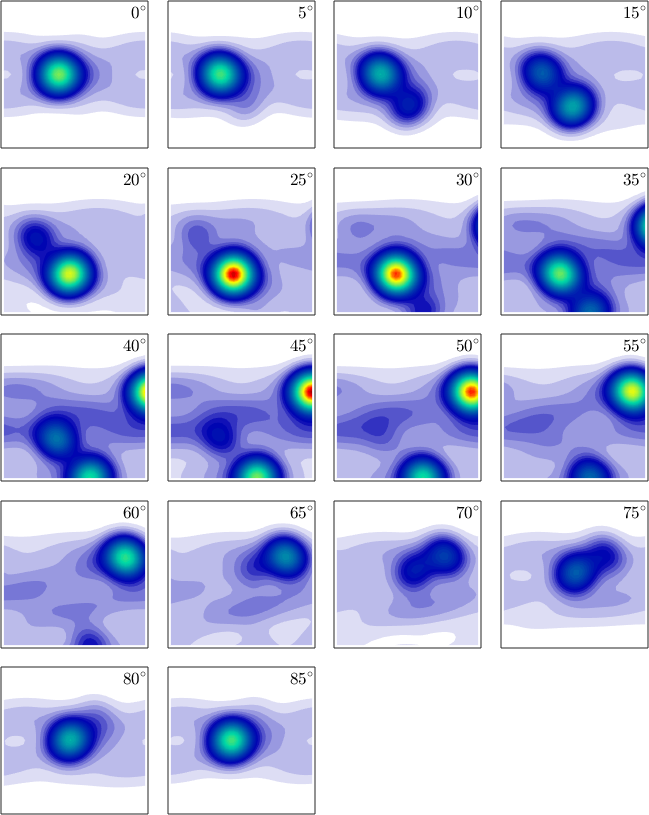TODO: Please help extending this section
cs = crystalSymmetry.load('Al-Aluminum.cif')
ori1 = orientation.brass(cs);
ori2 = orientation.copper(cs);
f = fibre.beta(cs);
odf = 0.2*unimodalODF(ori1) + ...
0.3*unimodalODF(ori2) + ...
0.5*fibreODF(f)cs = crystalSymmetry
mineral : Aluminum
symmetry: m-3m
elements: 48
a, b, c : 4, 4, 4
odf = SO3FunComposition (Aluminum → y↑→x)
multimodal components
kernel: de la Vallee Poussin, halfwidth 10°
center: 2 orientations
Bunge Euler angles in degree
phi1 Phi phi2 weight
35 45 0 0.2
90 35.2644 45 0.3
fibre component
kernel: de la Vallee Poussin, halfwidth 10°
fibre : (12 6 11) || -1,-1,4
weight: 0.5Plotting an ODF in two dimensional sections through the orientation space is done using the command plot. By default the sections are at constant angles of \(\varphi_2\). The number of sections can be specified by the option 'sections'
plot(odf,'sections',9,'silent','layout',[5 2])
annotate(ori1,'MarkerSize',15)
annotate(ori2,'Marker','v','MarkerSize',15)
plot(f,'linewidth',2,'add2all')
One can also specify the \(\varphi_2\) angles of the sections explicitly
plot(odf,'phi2',[25 30 35 40]*degree,'silent')
annotate(ori1,'MarkerSize',15)
annotate(ori2,'Marker','v','MarkerSize',15)
plot(f,'linewidth',2,'add2all')
Beside the standard phi2 sections MTEX supports also sections according to all other Euler angles.
- phi2 (default)
- phi1
- gamma (Matthies Euler angles)
- sigma (alpha+gamma)
plotSection(odf)
By default this command represents the ODF in the Bunge Euler angle space \(\varphi_1\), \(\Phi\), \(\varphi_2\). The range of the Euler angles depends on the crystal symmetry according to the following table
|
symmetry |
1 |
2 |
222 |
3 |
32 |
4 |
422 |
6 |
622 |
23 |
432 |
|
\(\varphi_1\) |
\(360^{\circ}\) |
\(360^{\circ}\) |
\(360^{\circ}\) |
\(360^{\circ}\) |
\(360^{\circ}\) |
\(360^{\circ}\) |
\(360^{\circ}\) |
\(360^{\circ}\) |
\(360^{\circ}\) |
\(360^{\circ}\) |
\(360^{\circ}\) |
|
\(\Phi\) |
\(180^{\circ}\) |
\(180^{\circ}\) |
\(90^{\circ}\) |
\(180^{\circ}\) |
\(90^{\circ}\) |
\(180^{\circ}\) |
\(90^{\circ}\) |
\(180^{\circ}\) |
\(90^{\circ}\) |
\(90^{\circ}\) |
\(90^{\circ}\) |
|
\(\varphi_2\) |
\(360^{\circ}\) |
\(180^{\circ}\) |
\(180^{\circ}\) |
\(120^{\circ}\) |
\(120^{\circ}\) |
\(90^{\circ}\) |
\(90^{\circ}\) |
\(60^{\circ}\) |
\(60^{\circ}\) |
\(180^{\circ}\) |
\(90^{\circ}\) |
Note that for the last two symmetries the three fold axis is not taken into account, i.e., each orientation appears three times within the Euler angle region. The first Euler angle is not restricted by any crystal symmetry, but only by specimen symmetry. For an arbitrary symmetry the bounds of the fundamental region can be computed by the command fundamentalRegionEuler
Specimen Symmetry
As we can see from the above table the first Euler angle \(\varphi_1\) ranges for all symmetries from zero to 360 degree. The only way to restrict this angle is to consider specimen symmetry. In the classical case of orthotropic specimen symmetry the range of the first Euler angle reduces to 90 degree and we obtain the common square shaped ODF section plots
odf.SS = specimenSymmetry('222');
plot(odf,'sections',18,'layout',[5 4],...
'coordinates','off','xlabel','','ylabel','')